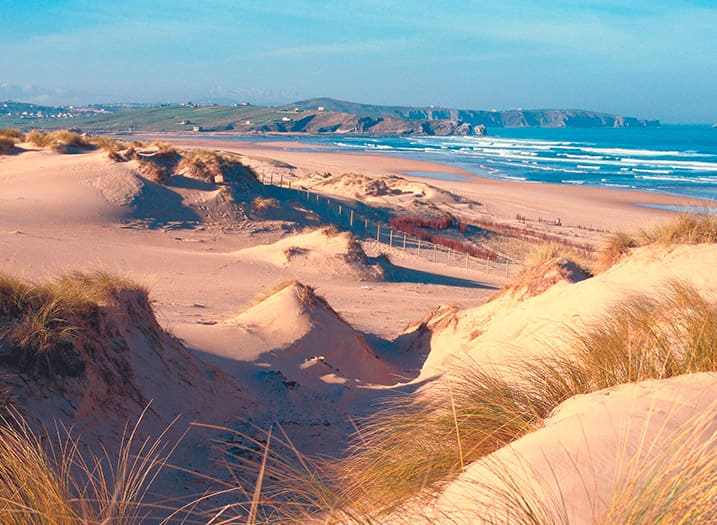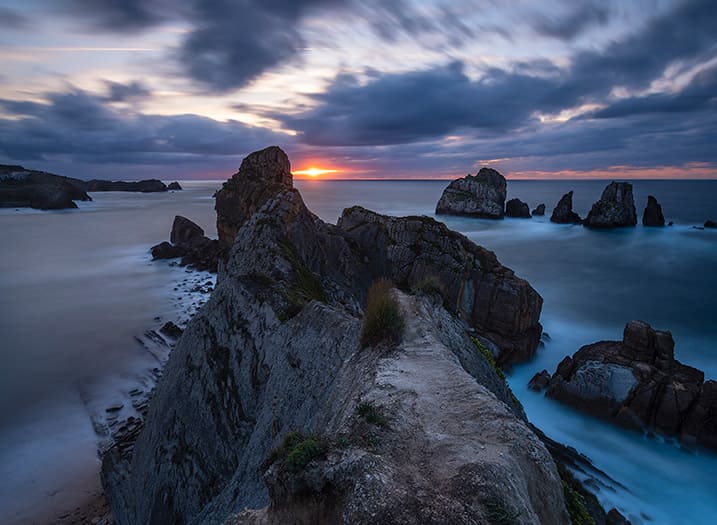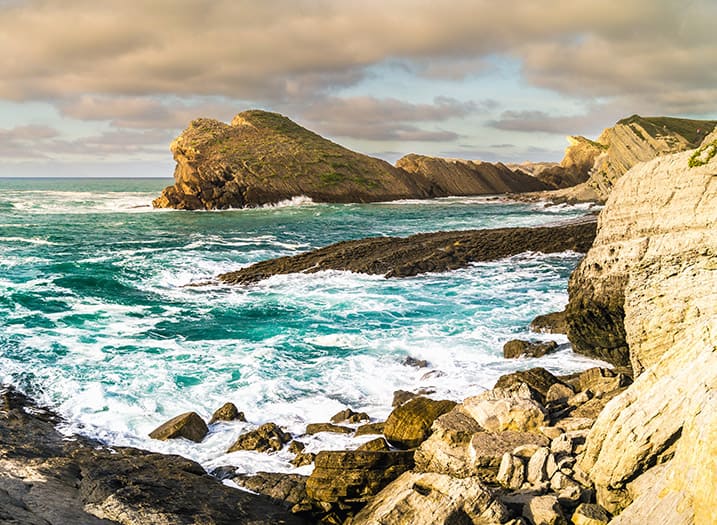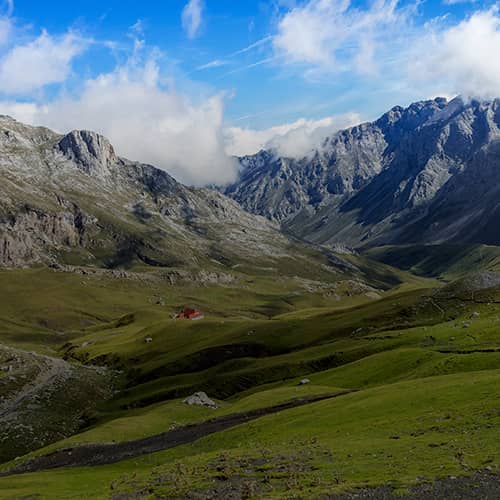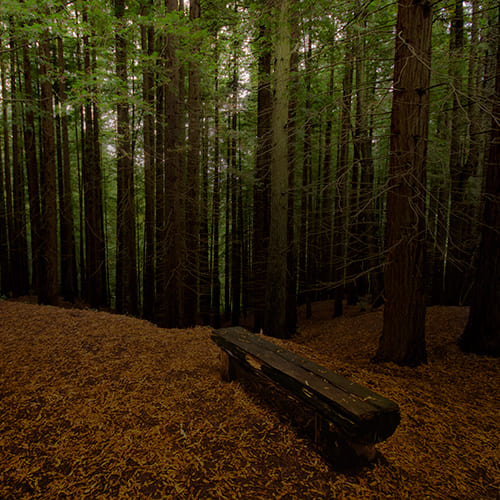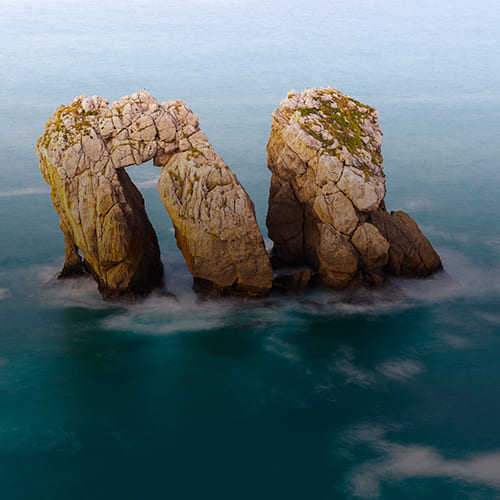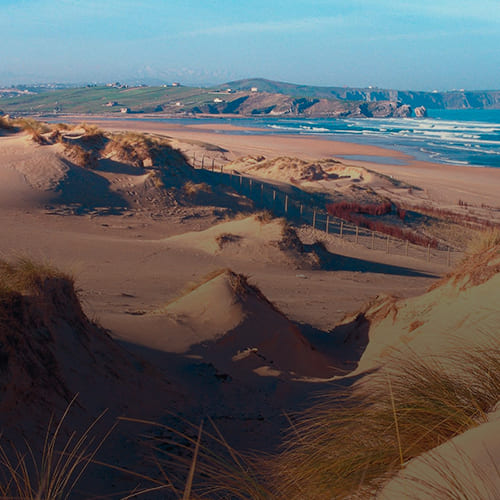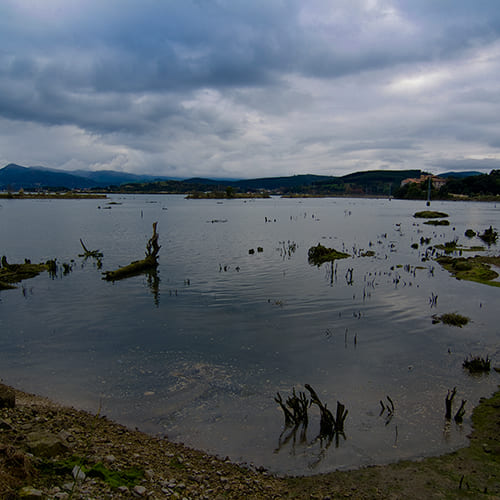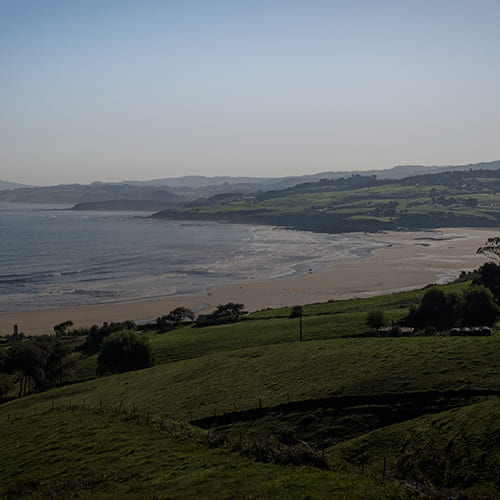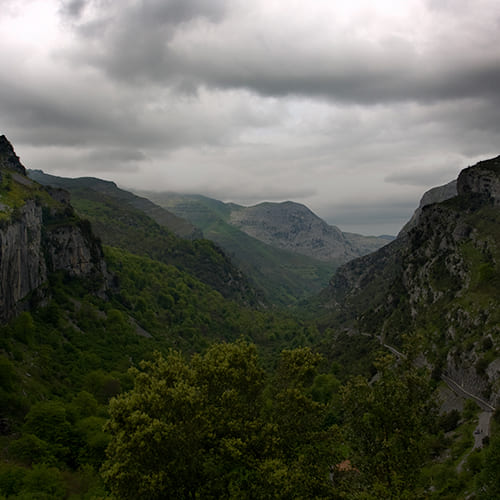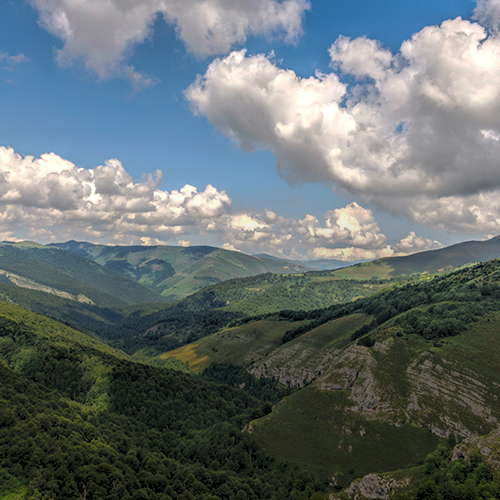Natural Parkof the Dunes of Liencres and Costa Quebrada
This park has 1,700 hectares and covers the municipalities of Piélagos, Miengo and Santa Cruz de Bezana. It brings together the wonders of the Natural Park of the Dunes of Liencres and the Geological Park of Costa Quebrada.

Created by the action of the wind
This Natural Park extends along the coastline from Punta del Águila to the west, in Miengo, to the Canal de Hoz to the east, right on the border between the municipalities of Santa Cruz de Bezana and Santander, including all the islets in that stretch of coast. Furthermore, inland, the Park incorporates the entire Pas Estuary and a large part of La Picota or Mount Tolío.
Located at the mouth of the Pas River (Mogro Estuary) within the municipality of Piélagos, in the central area of the Cantabrian coast, it was declared a Natural Park in 1986.
The Liencres Dunes Natural Park covers 195 hectares and consists of coves and two beaches of great beauty, Valdearenas and Canallave, a large expanse of maritime pine forest, and the dune system.
Behind the beach lie the dunes, which are considered one of the most important in northern Spain due to their geomorphological interest, presenting particular ecological and landscape characteristics.
Created by the action of the wind, which gathers sands from coastal currents and those of the Pas River, we can distinguish two distinct dune areas: one of mobile dunes, located next to the beach, which has advanced inland by the action of the wind and which in 1949 were fixed by planting a forest of maritime pine that favored a new landscape and managed to stop its expansion; the other type of dunes has managed to become fixed thanks to the help of some plant species such as the sand reed or the sea holly.
In the Liencres Dunes Natural Park, there are certain restrictions to preserve the dune system, but they do not pose any inconvenience to enjoying the park.
Numerous migratory waterfowl, especially visible in winter, make their home in this area. In Valdearenas, the dense forest surrounding it allows a bustling birdlife to pass through the beautiful landscape, taking advantage of the low tide.
You can walk along the coast from the Punta and Ensenada de Somocuevas, 500 meters from the town of Liencres, and continue to the Mogro estuary, where the Pas River flows. One of the most emblematic viewpoints to enjoy a global and aerial view of the entire area is La Picota, located almost 300 meters high.
Costa Quebrada Geological Park
The Costa Quebrada Geological Park is one of those exceptional natural jewels, included among the most relevant geological sites in the world, thanks to the fact that the coastal stretch between Punta de Los Pilis and the Miengo marsh has been declared a Spanish Global Geosite by the International Union of Geological Sciences (IUGS).
Included in the National Inventory of Points of Geological Interest of the Spanish Geological and Mining Institute, along with other elements of biodiversity of interest, such as the formation of scrublands, grasslands, or communities of seabirds, this geological park is not only a scenically very attractive coastal stretch, but also displays a unique set of coastal landforms and features that provide the opportunity to witness geology in action and discover in a direct and simple way the origin and evolution of our Earth.
The Costa Quebrada Geological Park offers routes for you to discover its charm and its mysteries. More information on the official website.


